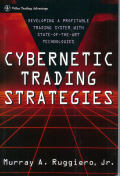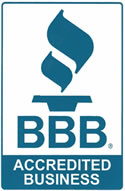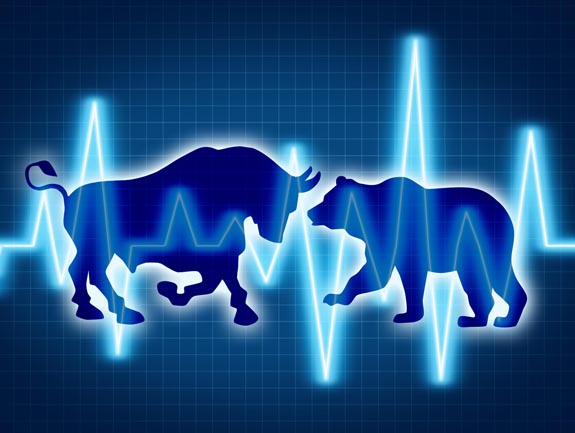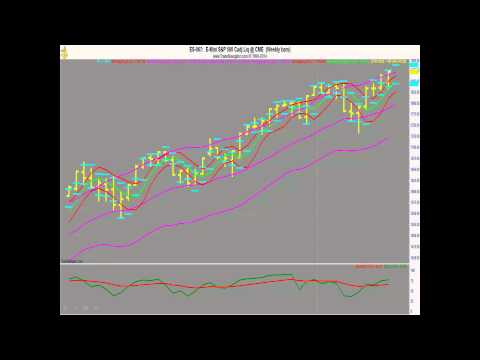.jpg)
Follow
Us:    
|
March 31, 2018
Online Traders Summit Presents...
Wendy Kirkland would like to personally invite you join her on March 31st at the Online Traders Summit.
This is a must-see event that features eight trading professionals who are eager to share their market insights. Wendy will be presenting: "Proprietary Indicators to Pinpoint Market Trades."
Register Here
to Save Your Space
It's Free!
We're very excited about this event, check out all the great presenters and complimentary offers. If you are unable to attend the event, register anyway to receive the recording and bonuses!
10:00 am ET | Stephen Bigalow: "A Little-Known, Extremely High-Profit Pattern Setup"
11:00 am ET | Vince Vora: "Safely Trading Today's Volatile Market"
12:00 pm ET | Wendy Kirkland: "Proprietary Indicators to Pinpoint Market Trades"
1:00 pm ET | Price Headley: "How to Leverage FANG Stocks with Weekly Options"
2:00 pm ET | Mark Sebastian: "Trading Weekly Options"
3:00 pm ET | Jim Crimmins: "5 Mistakes All Traders Make"
4:00 pm ET | Ken Calhoun: "How to Trade Momentum Gaps & Breakouts with MetaStock"
5:00 pm ET | Jeff Gibby: "Three Steps to a Successful Trade"
Many presenters are offering bonus items to everyone who registers to attend!
We expect this event on March 31st to reach capacity, so
Register Now to Save Your Spot!

|
|
Murray Ruggiero develops marketing timing systems using advanced technologies. Previously, he was a vice president with Promised Land Technologies, Inc., and the inventor of a patented method for embedding a neural network into a spreadsheet. He has been researching advanced technologies since 1988 and was featured in BusinessWeek as one of the leading experts using neural networks in finance and investing. Mr. Ruggiero has been contributing editor of Futures Magazine since June 1994 and has a monthly column, “Trading and Technology.”

|
Simulated Test Trading Results
Are Astonishing --

Amazing Book Reveals Powerful "Insider" Methods Worth Over $2.2 Million!
Renowned Analyst Murray Ruggiero Stuns Investment World By Releasing Details On Dozens Of Tested Methods Anyone Can Use To Strive For 5- And 6-Figure Trading Profits Every Year:
- Intermarket divergence method makes $513,325 in S&P futures!
- Seasonal corn futures strategy yields 200% annual profits!
- Correlation method makes $88,200 in T-Bonds!
- Plus dozens more!
BOOST YOUR PROFITS!
Forget the scary title; this book is about how you can use the newest, latest technical analysis and money management techniques designed to rocket your profits to new, all-time highs.
Using Technical Analysis
to Increase Your Profits
Cybernetic Trading Strategies
|
|

Better
Business Bureau
 |
|
Click on authors name
to learn more
|
| |
|
|
The U.S. Senate passed S. 2155 that would offer relief from a number of Dodd-Frank provisions. At the core of the overhaul is an assumption that the financial overhaul under Dodd-Frank was far too aggressive and harmed smaller banks in the process, all while attempting to rein in the bigger financial firms that caused the 2008 crisis. Such a move could free up many regional banks from dealing with heightened regulatory scrutiny that was only meant to rein in the bigger banking institutions.
This week, we look at three stocks that could do well if all proceeds according to plan.
Then, Lee Gettess provides his perspective on both the S&P and the bond market for the coming week.
Next, we have Murray Ruggiero who talks about the development of cycle-based trading.
Last, Chris Verhaegh covers his PULSE Options Weekly Newsletter.
Enjoy!
Adrienne LaVigne
TradeWins Publishing
 |
|
Dodd-Frank Overhaul: Three Stocks to Own Right Now
by
TradeWins Publishing
The U.S. Senate passed S. 2155 that would offer relief from a number of Dodd-Frank provisions. According to JDSUPRA:
“The Act would also reduce the regulatory burdens on financial institutions, particularly financial institutions with total assets of less than $10 billion. Bank holding companies with up to $3 billion in total assets would be permitted to comply with less restrictive debt-to-equity limitations instead of consolidated capital requirements. This change should promote growth by smaller bank holding companies, organically or by acquisition. Larger institutions should benefit from the higher asset thresholds that would apply to systemically important banks subject to enhanced prudential standards. The higher thresholds may lead to increased merger activity between and among regional and super regional banks.”
At the core of the overhaul is an assumption that the financial overhaul under Dodd-Frank was far too aggressive and harmed smaller banks in the process, all while attempting to rein in the bigger financial firms that caused the 2008 crisis.
At the moment, banks with assets of $50 billion or more are considered systemic financial institutions and are therefore subjected to stricter oversight. However, as it turns out, that $50 billion figure was far too low, which in turn harmed the smaller banks.
Even former Massachusetts’ representative, Barney Frank just admitted it was a mistake. “That’s too low. That was a mistake. We should have made it much higher” as noted by the ABA Banking Journal. “When it comes to lending and job creation, the regional banks are obviously very, very important. I hope that if we get some regulatory changes, we give some regulatory relaxation to those banks.”
Dodd-Frank Overhaul
|
Lee
Gettess' Market Sense
by Lee Gettess
Lee
Gettess is a top trader who is excited
to bring you his video newsletter.
Each week, Lee will share his predictions
on what he anticipates from the bond
and S&P markets.
Watch
Video
|
Cycle-Based Trading
by Murray Ruggiero
The following
is an excerpt from Murray Ruggiero's Cybernetic Trading Strategies
Cycles are recurring patterns in a given market. The area of cycles has been intensely researched for over 100 years. In fact, there are organizations dedicated to the study of cycles. Cycle-based trading became a hot topic because of the software available for analyzing financial data and for developing trading systems. Because of this software, we can see how a market is really composed of a series of different cycles that together form its general trading patterns. We can also see that the markets are not stationary. This means that the cycles in a market change over time. Change occurs because the movements of a market are not composed solely of a series of cycles. Fundamental forces, as well as noise, combine to produce the price chart.
Cycle-based trading uses only the cycle and the noise part of the signal. There are many tools that can be used for cycle analysis. The best known are the mechanical cycles tools that are laid over a chart. An example is the Stan Ehrlich cycle finder, a mechanical tool that is overlaid on a chart to detect the current dominant cycle.
Among the several numerical methods for finding cycles, the most well known is Fourier analysis. However, Fourier analysis is not a good tool for finding cycles in financial data because it requires a long, stationary series of data – that is, the cycle content of the data does not change. The best numerical method for finding cycles in financial data is the maximum entrophy method (MEM), an autoregressive method that fits an equation by minimizing error. The original MEM method for extracting cycles from data was discovered by J.P. Burg in 1967. Burg wrote a thesis on MEM, which was applied to oil exploration in the 1960’s. The method was used to analyze the returning spectra from sound waves sent into rock to detect oil. There are several products that use the MEM algorithm. The first cycle-based product was MESA (Maximum Entropy Spectral Analysis), by John Ehlers. It then became available as a stand-alone Windows product as well as an add-in for TradeStation. Another powerful product is TradeCycles, co-developed by Ruggiero Associates and Scientific Consultant Services. There are other products, such as Cycle Finder by Walter Bresser, but they do not offer the ability to back-test results. If you cannot use a tool to back-test your results, then, in my opinion, you should be very careful trying to trade it.
Cycle-Based Trading
|
PULSE Options Weekly Newsletter
by Chris Verhaegh
Every week Chris publishes his PULSE Options Weekly Newsletter. The following is an excerpt from his most recent issue.
First Things First
This upcoming week is the last week of the month. But more than just the last week of the month, it’s the last week of March (the third month of the year). And as such, it is the last day of the Quarter.
Please understand that Mutual Funds are only required to send out statements to their clients on a quarterly basis. And as such, the last day of each Quarter is a bigger deal than you might realize.
You see Mutual Funds are famous for hiding things in plain sight. And by that I mean that a Mutual Fund may buy a good performing stock in the last week of the Quarter so that it is able to report that stock as one of its “Holdings” (never mind the fact it did not buy the stock when it was cheap and it didn’t participate in the stock’s run-up).
Because of this unfortunate reality, quite often you will see a little extra buying taking place of stocks that have performed well over the preceding three months. Please understand I am not accusing all Mutual Funds of this practice. Certain Funds replicate specific Indices. That is a Fund may own stock in all 500 companies which make up the S&P 500. There is no window-dressing in an Index Fund.
To Learn More Click Here
|
|

.jpg)



